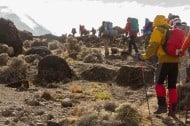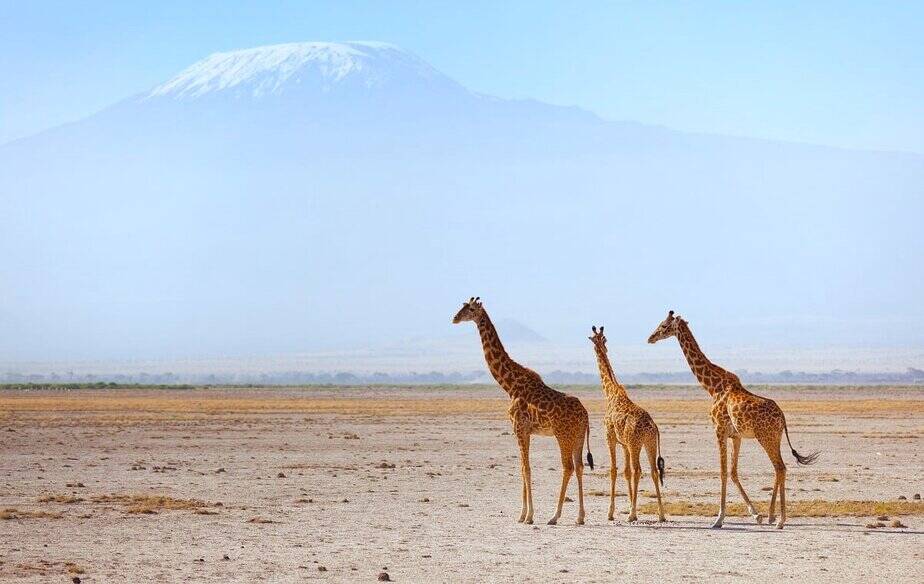
A Beginners Guide to Packing for Mount Kilimanjaro
Climbing Mount Kilimanjaro is no simple task. Standing in at 5,895 meters above sea level, it is the tallest mountain in all of Africa.
Depending upon the route that is traversed, it takes the average climber 5 to 9 days to climb from the bottom of the Kilimanjaro to the top. So, if you’re getting ready to climb it, you’d better be very well prepared.
Have no idea what you need to pack for your trip? Never fear! This guide has all of the information you need.
Clothing
When making your way up the Kilimanjaro, you must be sure to have plenty of clothing on hand. The higher you scale the mountain, the colder the temperatures will be.
General
First off, you should pack up the basics: shirts, pants, and underwear. You want to be sure that you have enough clothing to get you through your entire trip. We recommend having at least 2 of each piece of clothing for each day that you’re climbing.
Make sure to bring plenty of layers. Temperatures will span from the 20 degrees Fahrenheit to 100 degrees Fahrenheit depending upon where you’re located on the mountain.
Not only will you want t-shirts and long-sleeved shirts, but jackets and coats as well. Make sure that your jacket and coat are waterproof, as rain and snowfall are fairly common on the mountain.
As far as pants go, we recommend both hiking trousers and trekking pants. Again, be sure to bring plenty of layers.
Footwear
Be sure to bring plenty of socks — not only do you need standard hiking socks, but thick, insulating socks as well. Bring at least 2 pairs for each day that you’ll be gone.
You should also bring light to mid-weight hiking boots as well as camping sandals.
Headgear
We recommend bringing a variety of different pieces of headgear. At a minimum, you should bring hats and sunglasses. Both snow beanies and billed caps will be needed.
If you really want to be prepared, you should also bring a headlamp and a neck gaiter.
Hand Gear
Remember, it gets cold up there! You’re going to want to have some gloves. We recommend bringing both a light pair and a heavy, waterproof pair.
You should also make sure to have trekking poles. Making your way up Kilimanjaro is daunting enough with them. If you try climbing the mountain without them, you are going to be in a lot of trouble.
Technological Devices
While climbing Mt Kilimanjaro is about getting away from the technology-dense world we live in, there are some technological devices that you’re going to want to take with you.
These will not only help you to preserve memories, but to help keep you entertained during your downtime.
At a minimum, you should bring a Go-Pro camera. You can use this camera to capture your trip up the mountain, preserving the memory for future consumption. Go-Pros are weather-resistant, allowing them to push through rain and cold without any worry.
You should also consider bringing an E-reader and/or music device. When you set up camp at the end of a long day of climbing, it can be nice to relax with a good book or some music.

Bags
Obviously, you’re going to have to have a bag in which to put all of your stuff. In fact, we recommend bringing a few bags. Not only should you bring a 30-liter daypack to carry on your back, you should bring an 80-liter duffel bag in which to store all of your clothing.
Your duffel bag will be carried by an assistant known as a porter. He or she will carry the bag up as you climb, and give it to you at the end of each day. You can then use it at your camp spot until the next morning’s climb.
We also recommend bringing a rain cover for your daypack. The chances of rain are good, and you don’t want to ruin the contents of your bag.
Camping Implements
When hiking Kilimanjaro, you will be lead by a guide. He or she will typically work for a company which makes everything easy for you and the other members of your group.
This company will schedule accommodations, ensuring that you have tents in which to sleep every night.
However, it’s still recommended that you bring some camping gear. Namely, you should bring a layered sleeping bag, a sleeping at, and an inflatable pillow.
The ground upon which you sleep stands a good chance of being bumpy and uneven, necessitating some padding in order to accommodate a good night’s sleep. Make sure that you bring plenty of cushions.
Hydration
It’s vital that you don’t forget about hydration. Make sure to bring plenty of water and energy drinks. For many, it’s wise to carry a large water bladder, allowing for an entire day’s hydration in just one place.
At times, it will be necessary to retrieve water from natural streams upon the mountain. When doing so, you will want to be sure that you purify the water. There are water purification tablets available which can do this for you.
Miscellaneous Accessories
The above-listed items are the biggest items you need to worry about, but they are not necessarily the most important. There are a number of small items which carry a great deal of importance in Kilimanjaro climbs.
These items include sunscreen, back locks, insect repellent, baby wipes, medications, toilet paper, your passport, your insurance card, zip locks bags, and energy bars.
You will be battling extreme heat, extreme cold, parasitic insects, rough terrains, and everything in between. Should these entities cause you any harm, these small items can make a world of difference.
Looking for More Information About Mount Kilimanjaro?
Now that you’ve learned about what to pack for your trip, you might be looking for more information on Mount Kilimanjaro. If so, you can find it here at the African Sermon Safaris Blog.
Check out some of our Kilimanjaro climbing route guides right now.
Have any questions? Don’t be afraid to contact us!


